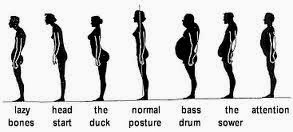01 Mar Keep Shoulder Pain Away!
In 1995, a study by Sher (not the entertainer!) using MRI’s showed that 34% of all the individuals (and 54% over age 60) in the study demonstrated rotator cuff tear(s). 11 years later, a study by Yamaguchi, using diagnostic ultrasounds, found that number to be 36% of the population having rotator cuff tears. In general, studies have shown that 30-50% of the population over 50 years of age have either a partial or full thickness tear of one of their 4 rotator cuff muscles.
These numbers are rather significant, however, many of these individuals do not have any symptoms. Those who do have rotator cuff injuries understand the significance of their injury, as well as how limiting it can be on their daily lives. The key to good rotator cuff health is posture and strength.
I like to always start my posture education by breaking my patient’s days into thirds. 1/3 of your day you sleep, 1/3 you work, and 1/3 you do whatever you want to do (generally speaking, excluding our retired patient population!). If you can tweak the 1/3 of your day that you sleep (to put yourself in better positioning), that can play a large role in how your shoulder feels for the rest of the day. I typically recommend sleeping on your back or on your side(s) with your top arm at your side (either with a pillow between your arm and side or with your hand in a pocket).
At work, I recommend proper posture (easier said than done!). Most people know what this should look like, but we don’t always follow this recommendation! The third of your day that you do whatever you want (outside of work and sleep), we are typically moving around, so it’s not as big of an issue unless you have a serious quilting, knitting, or computer hobby that puts you in more of a forward head and shoulder posture.

Once your shoulder is properly positioned with good posture, your rotator cuff should move in a more appropriate manner, and thus limiting fraying that may occur due to impingement-like issues. You can then begin to build strong rotator cuff musculature. Most literature shows that the rotator cuff only fires up to about 15 pounds of resistance. That means, for most people, doing rubber band resistance exercises and light dumbbell strengthening should improve one’s rotator cuff strength and health. By putting a pillow or a rolled up towel between your arm and side, studies have shown that the rotator cuff fires up to 200% more effectively as compared to not having something between your arm and side.
By working on some basic strengthening exercises you should be able to improve your rotator cuff strength and limit potentially problematic range of motion loss and increased pain later in life.


